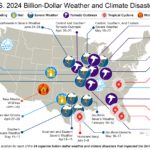Insurers are using the new open loss modeling platforms to build their own catastrophe models for three main reasons: clarity, control and cost.
Catastrophe models have become extremely important risk management tools. The model output is used for critical underwriting and pricing decisions along with determining reinsurance needs and capital requirements. External stakeholders, such as rating agencies and regulators, review and rely on the model output, and they require you to fully understand the models generating that output.
Given the importance of the model loss estimates, insurers need greater clarity on the assumptions driving those estimates. The traditional opaque “black box” models are giving way to the fully transparent open loss modeling platforms.
And once you accept two facts about the models, it becomes obvious why you should have control over those assumptions: They will never be accurate, and much of the model volatility is due to changing assumptions and not new science.
The catastrophe models cannot be accurate because there is so little data for most peril regions. Scientists rely on observations and data for the model assumptions. The catastrophe models are no different from other types of statistical models—where there is little data there is low confidence and high uncertainty.
For example, there have been only nine landfalling Northeast hurricanes since 1900—none of them exceeding Category 3 intensity. As such, model estimates of the frequencies of Category 4 hurricanes in this region are based on subjective judgments that can vary significantly. Because scientists don’t know the “right” assumptions, they can develop very different opinions and change their minds.
With an open loss modeling platform you can test the full range of credible assumptions and then lock down a consistent set of assumptions for your risk management decisions. You no longer subject your decisions to the volatile opinions of third parties.
Finally, the cost of the traditional third-party models—in terms of license fees and internal resources—is driving insurers to look for alternatives. Insurers are now realizing their resources can be better allocated to customizing their own models on the newer, more efficient open platforms.



















 Viral Work Trends Insurers Will See More in 2025
Viral Work Trends Insurers Will See More in 2025  The U.S. Has Sustained 24 Billion-Dollar Disasters in 2024
The U.S. Has Sustained 24 Billion-Dollar Disasters in 2024  Job Search Strategy Varies by Generation: Survey
Job Search Strategy Varies by Generation: Survey  Swiss Re Execs Sleeping Well After $2.4B Q3 Reserve Boost
Swiss Re Execs Sleeping Well After $2.4B Q3 Reserve Boost 

